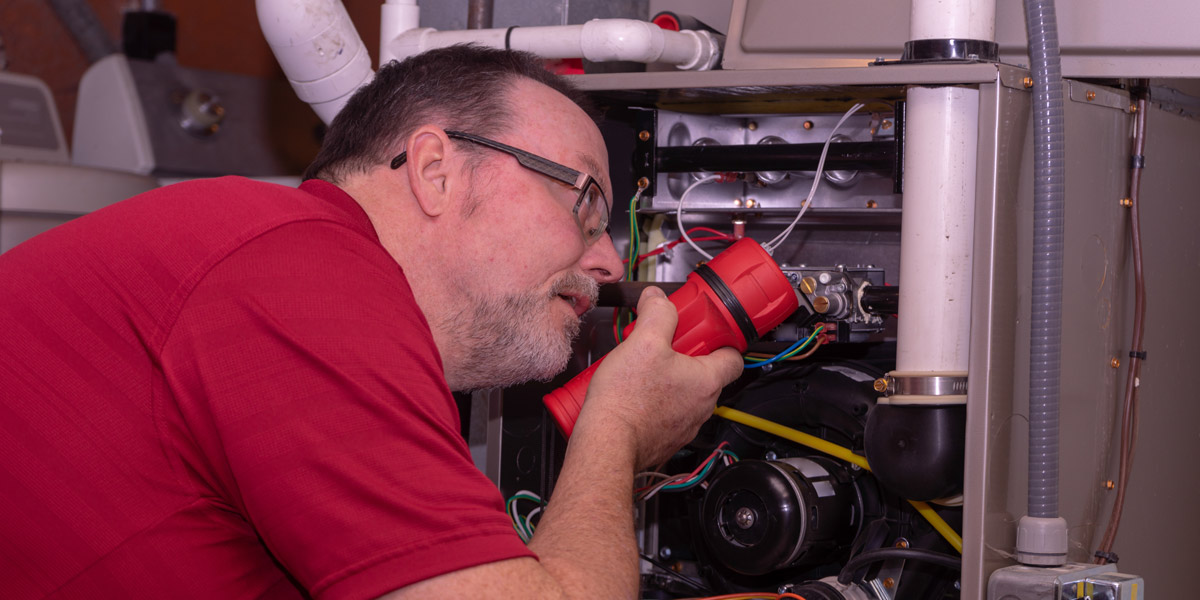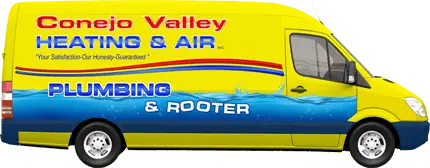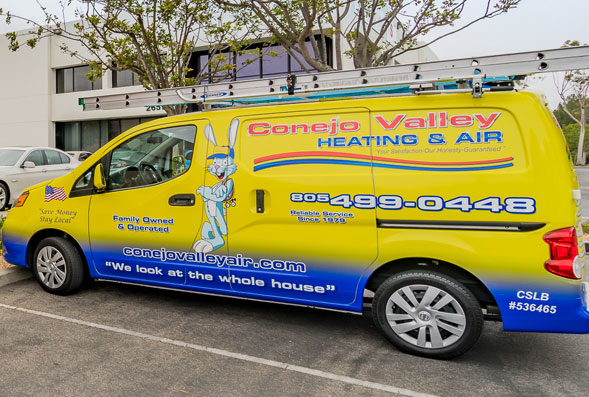
Do you dread walking into a freezing house? Do you also feel your wallet ache when thinking about your winter heating bills? Do you loathe the thought of paying for emergency heating repair? If you answered yes to any of these questions, it is time you start keeping up with heating and furnace maintenance.
As the weather gets colder, furnaces and other heating equipment overwork and break down more often. Sure, there is nothing worse than being unable to relax in comfort and warmth within your home while the temperatures outside are crashing down. And while some issues are straightforward to resolve, trying to save money by postponing winter heating maintenance could cost you dearly in the form of extensive system damage.
Since you do not want emergency HVAC service eating into your pocket, read on to learn the why and how heating maintenance is key to your peace of mind, comfort, and cost savings during the cold season.
Table of Contents
Why is Preventive Heating and Furnace Maintenance Important?
Heating system maintenance involves cleaning, inspecting, and adjusting your heating and cooling systems before they become damaged or inefficient. It is an integral part of keeping your system running efficiently for a more extended period. Ultimately, this saves you money on utility costs and repairs and provides consistent comfort in your home.
Preventative maintenance also extends the life of your heating system by reducing wear and tear on its various components. This means that you won’t have to replace the entire unit as often, saving you money.
It is much cheaper to have HVAC experts service your heating system than it is to replace one that malfunctions.
A minor problem with your furnace, heating pump, or boiler could end up costing hundreds or even thousands of dollars in repairs and parts.
The way your heating system circulates air throughout your home directly impacts the quality of the air you and your family breathe. A dirty system harbors germs and allergens that can quickly spread around your home, causing severe health problems, including asthma flares. Preventative heating and furnace maintenance involves cleaning your system’s components and replacing the filter) to keep airborne contaminants at minimal while sustaining peak system performance.
Furnace maintenance keeps your warranty valid. Many HVAC manufacturers require proof of annual equipment maintenance from homeowners submitting repair claims under warranty. And since some heating components are pretty expensive, regular maintenance ensures you enjoy the coverage you need to bring back your system to life should something go wrong during the warranty period.
Things to Expect from a Routine Heating and Furnace Maintenance Check
A routine heating maintenance visit involves a qualified technician inspecting your heating system’s interior and exterior components. The basic task is replacing the filter to maximize airflow so your system works as designed. A clogged filter not only negatively impacts your indoor air quality but also increases the risk of your heating system straining and shutting down.
If your furnace has a belt-driven blower, it makes sense for the professional to inspect the fan belt for damage. A worn-out belt needs replacing; else, it continues to hamper blower function. The expert will also check the belt tension.
Conejo Valley Home Services experts go beyond the above heating maintenance task. Our HVAC specialists also verify the integrity of your system’s electrical connections and evaluate the blower motor’s voltage and amperage. Our technicians are well-trained and experienced in diagnosing and alleviating electrical overloads in blower motors.
When you call us for winter furnace maintenance, our technicians will also evaluate the structural form of your heat exchanger. The goal is to ensure zero cracks or holes or repair any physical damage to prevent potential carbon monoxide leaks in your home.
The service may include testing the functionality of your thermostat and deciding between repairing and replacing it. Our technicians may recommend upgrading to a programmable thermostat to automate temperature adjustment. We also check your vents and ducts and possibly clean them to ensure optimal airflow throughout your home. You may also have other HVAC appliances checked, including humidifier, dehumidifier, and hot-water heater.
Additional heating and furnace maintenance tasks include:
- Checking the refrigerant levels and pressure
- Ensure there are no refrigerant leaks
- Checking for any visible damage on the outside
- Lubricating the moving parts, including the bearings
- Clean and straighten condenser coils
- Inspect fuel pipes for leaks
- Testing gas pressure
When you sign a heating maintenance program with our HVAC company, you enjoy custom yet affordable services that match your needs and budget and are performed with attention to detail. You also receive constant reminders, so you never fall behind your maintenance. And as if that is not enough, you get discounts, so you keep your heating and cooling system in top shape without spending a fortune.
Fall is the best time to schedule heating system maintenance as this prepares your HVAC to support your comfort needs during the coming winter. That is quite affordable compared to typical emergency heating/furnace repair costs.
Signs You Might Need a Winter HVAC Service
Winter is a great time for staying inside and enjoying the warm air, but it can also mean dealing with surprise visits from HVAC experts. That is because your heating system has to work harder to keep your family comfortable and may need a little help to get through the season. Below are circumstances to schedule emergency HVAC service during winter:
» Airflow problems
Limited air distribution is among the most prominent reasons behind emergency heating repair calls. The problem usually manifests in hot and cold spots in one or two rooms. Sometimes, you will find no warm air coming out of the vents. Poor airflow also causes air pressure imbalance which manifests in drafts or doors slamming by themselves.
Do not wait to contact an HVAC expert. Restricted airflow can strain your heating system, leading to a costly furnace repair or replacement.
» Loud noises.
If you hear strange noises coming from the furnace or heat pump, that is a sure sign something needs immediate professional intervention. Different heating system issues manifest in various sounds, including:
- Banging: It emanates from ignition delay and ductwork contraction and expansion. Banging noises in boiler systems originate from air trapped in pipes or limescale accumulation in the heat exchanger.
- Scraping: It comes from a loose or broken blower wheel striking the furnace casing.
- Squealing: A loose or slipped fan belt is the top culprit for squealing sounds from a furnace or heat pump.
- Whistling: A furnace whistles due to an obstruction to airflow and possibly a mismatch between the heating unit and home ductwork.
Water heater noises denote condensation in the burner, mineral deposits, and pressure build-up in the tank. Should you hear crackling, popping, and hissing noises, be quick to schedule an emergency water heater repair service.
» Unpleasant odors
Do not wait any longer to consult with a heating and cooling expert if you notice unfamiliar smells coming from the vents. A musty smell indicates mold buildup in the vents. This requires you to schedule professional duct cleaning with a licensed local HVAC company.
You should also beware of odors of burning plastic/electrical components (indicate short circuit) and rotten eggs (a pointer to a natural gas leak).
» Short run times
A furnace turns off once it heats your home to the set thermostat temperature and kicks in when the targeted space becomes colder. Usually, a furnace should cycle up to 8 times an hour. Anything beyond the acceptable range is deemed short-cycling.
The common culprit for short cycling is a faulty thermostat. However, there exist serious causes that can lead to overheating and system failure, and they include:
- Deteriorated flame sensor
- Overheating
- Oversized furnace
- Clogged air filters
- Ignition failure
- Air leaks
- Blocked flue
» Skyrocketing energy bills
A typical American household spends lots of money each year on energy. If your home’s heating and cooling systems are consuming too much energy, you could be spending more than necessary for the same level of comfort. Should you notice a sudden spike in your energy bills, have a qualified HVAC expert check what might be going on with your heating system.
Related Article: 8 Warning Signs That Indicate Your HVAC System Needs Emergency Repair
Bottom Line
When you allow routine heating maintenance to go by the wayside, you risk having a defect spiral out of control. What may have started as a minor issue can become a heating catastrophe that costs much more than if you had been proactive. Staying on top of vital furnace/heat pump tune-ups translates into a warmer and happier family, more savings on energy bills, and fewer emergency heating repairs during winter.
At Conejo Valley Home Services, we are experts at keeping your home comfortable no matter what the heating season brings. No job is too big or small for our team of HVAC experts— whether furnace repair, heat pump installation, water heater emergency repair services, to HVAC replacements. Our pros are also adept at providing maintenance for your heating system on an annual basis, ensuring it serves you diligently whenever you need it. Call us at 805-499-0448 for expert assistance with your HVAC needs.











